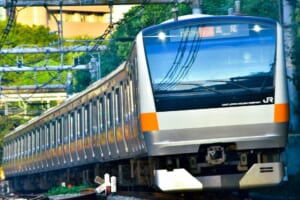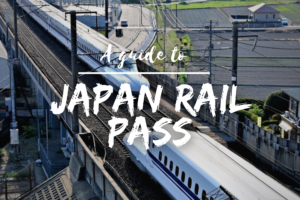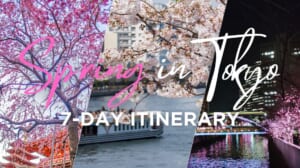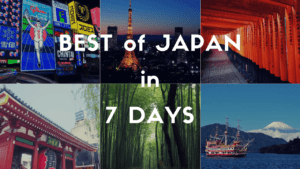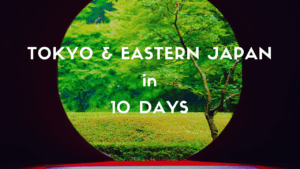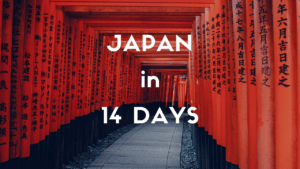14 day Spring Itinerary in Japan
Discovering Japan Through Sakura Season
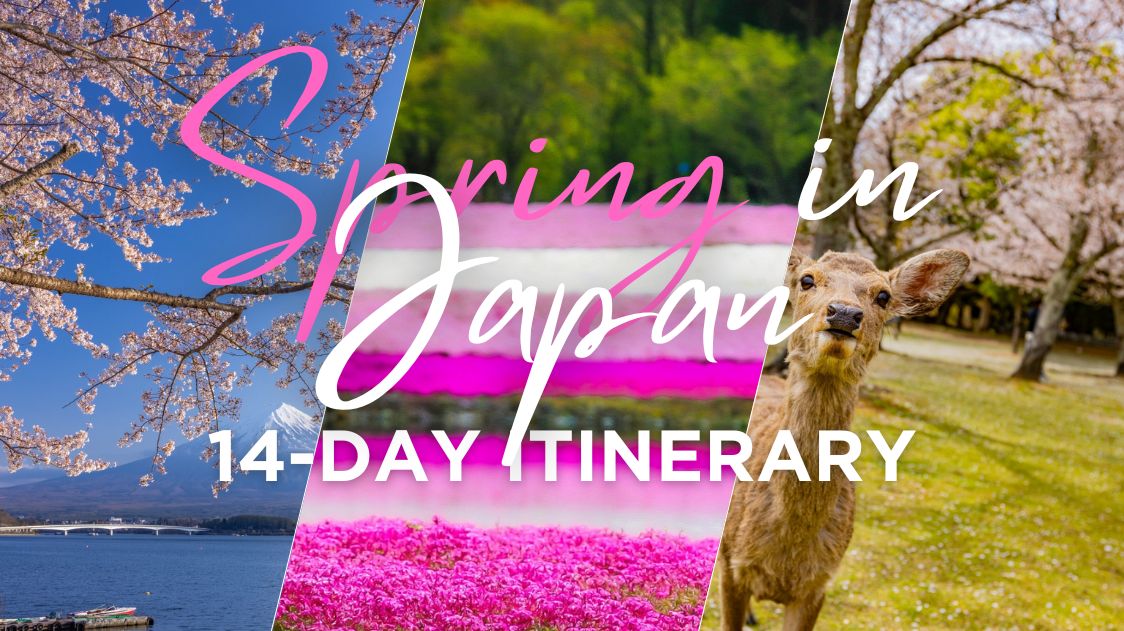
Spring is the busiest season in Japan, with good reason. The landscape becomes covered with the delicate pink hues of cherry blossoms reaching equally the bustling streets of its largest metropolitan areas and the peaceful parks and gardens, as well as the most historical places. This Spring itinerary covers in 14 days all the indispensable iconic landmarks taking into account the best places to admire the natural beauty of Sakura, offering an immersive experience into Japan’s rich culture, history, and traditions.
Without further ado, let’s discover the best of Japan’s springtime allure!
▽Here are some helpful passes for your journey in Japan!▽
▶ Book your Tokyo Wide Pass ticket here!
▶ Book your Hankyu Tourist Pass here!
▶ Book your Kansai Thru Pass (2 or 3 Days) here!
▶ Book your JR West Kansai Pass (1, 2, 3 or 4 Days) here!
▽Check our guides to Japan’s transportation passes!▽
*Please note that this article contains affiliate links.
Days 1-2: Tokyo
▽Check some of your helpful guides for a smooth start to your trip!▽
▶How to travel to Tokyo from Narita Airport or Haneda Airport
▶Luggage Delivery from Narita and Haneda Airport to Your Hotel
Day 1: Ueno and Asakusa
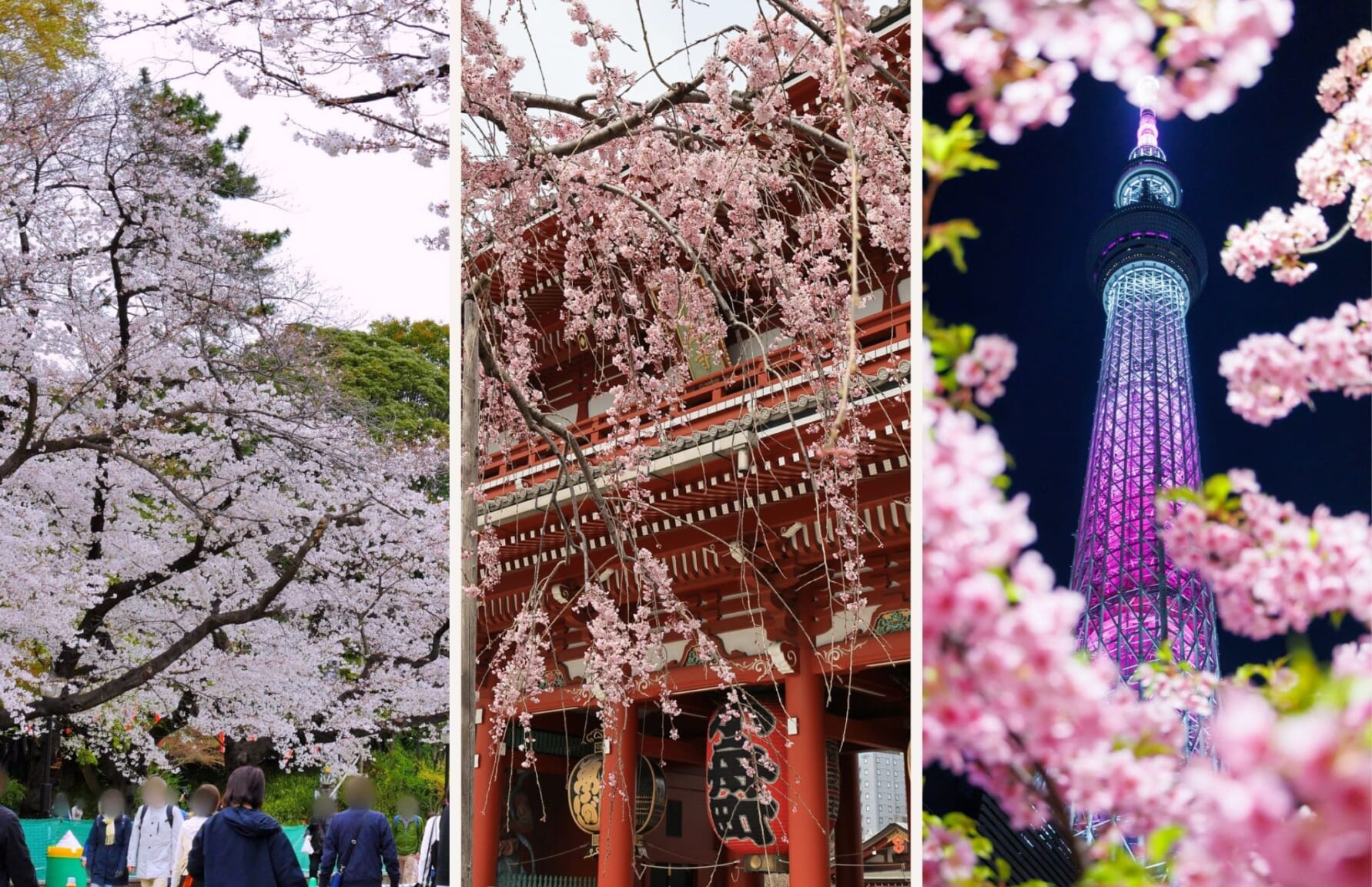
Ueno Park (上野公園) is especially beautiful during cherry blossom season. This is why it’s a popular spot for “hanami” (flower viewing) due to the sheer number of sakura trees blooming in spring. Take a stroll enjoying the sights and all the cultural landmarks within the park. For lunch, Ameyoko (アメ横) is a good option!
In the Afternoon, make your way to Asakusa (浅草), home to the iconic Sensoji (浅草寺), the oldest Buddhist Temple in Tokyo. Stroll down Nakamise Shopping Street (仲見世通り), lined with stalls selling traditional snacks and souvenirs, and explore the surrounding neighborhood areas.
Towards the evening. cap off the day with a visit to Tokyo Skytree (東京スカイツリー), the tallest structure in Japan. The observation decks offer breathtaking views of the city, and there are also cafes and restaurants where you can have dinner for your convenience.
Day 2: Shinjuku and Shibuya
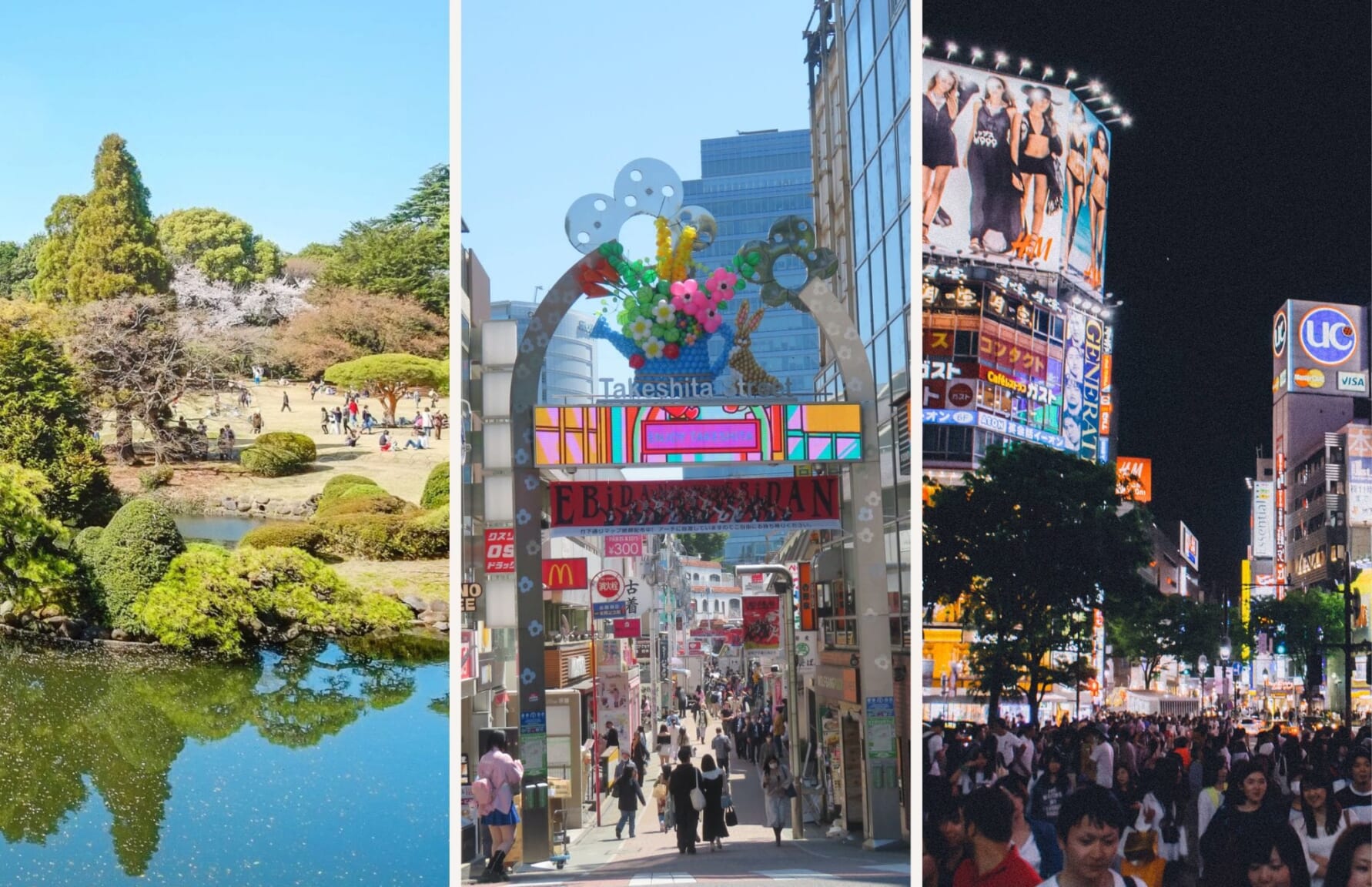
In the afternoon, wander through the trendy streets of Harajuku (原宿) and Omotesando (表参道), known for their unique fashion, art, and culture. Make sure you visit Meiji Jingu (明治神宮), the most important Shinto shrine in Tokyo dedicated to Emperor Meiji and Empress Shoken, for a nice interlude in a peaceful forested area. Come evening, and it’s time to experience the energy of Shibuya (渋谷), famous for its bustling crossing. Explore the area’s numerous shops, cafes, and restaurants.
▽More ideas around Tokyo in Spring▽
▶Best Places to See Cherry Blossoms in Tokyo
▶Tokyo Sakura Guide: Best Hanami Spots in Tokyo
▶Best Places to See Night Cherry Blossoms in Tokyo
Days 3-4: Kanagawa (Yokohama & Hakone)
Day 3: Day Trip to Yokohama

For lunchtime, go to Minato Mirai (みなとみらい), a modern seaside area with shopping, amusement parks, and museums. The area’s futuristic architecture and ocean views make for a pleasant afternoon stroll with cherry blossom-lined streets. After sunset, go to Chinatown (中華街), the largest one in Japan, and spend a fun evening exploring the shops and streets lined with the most authentic Chinese cuisine.
▽More ideas of things to do in Yokohama▽
▶Best Places to See Cherry Blossoms in Yokohama
▶Best Things to Do in Yokohama
Day 4: Day Trip Hakone
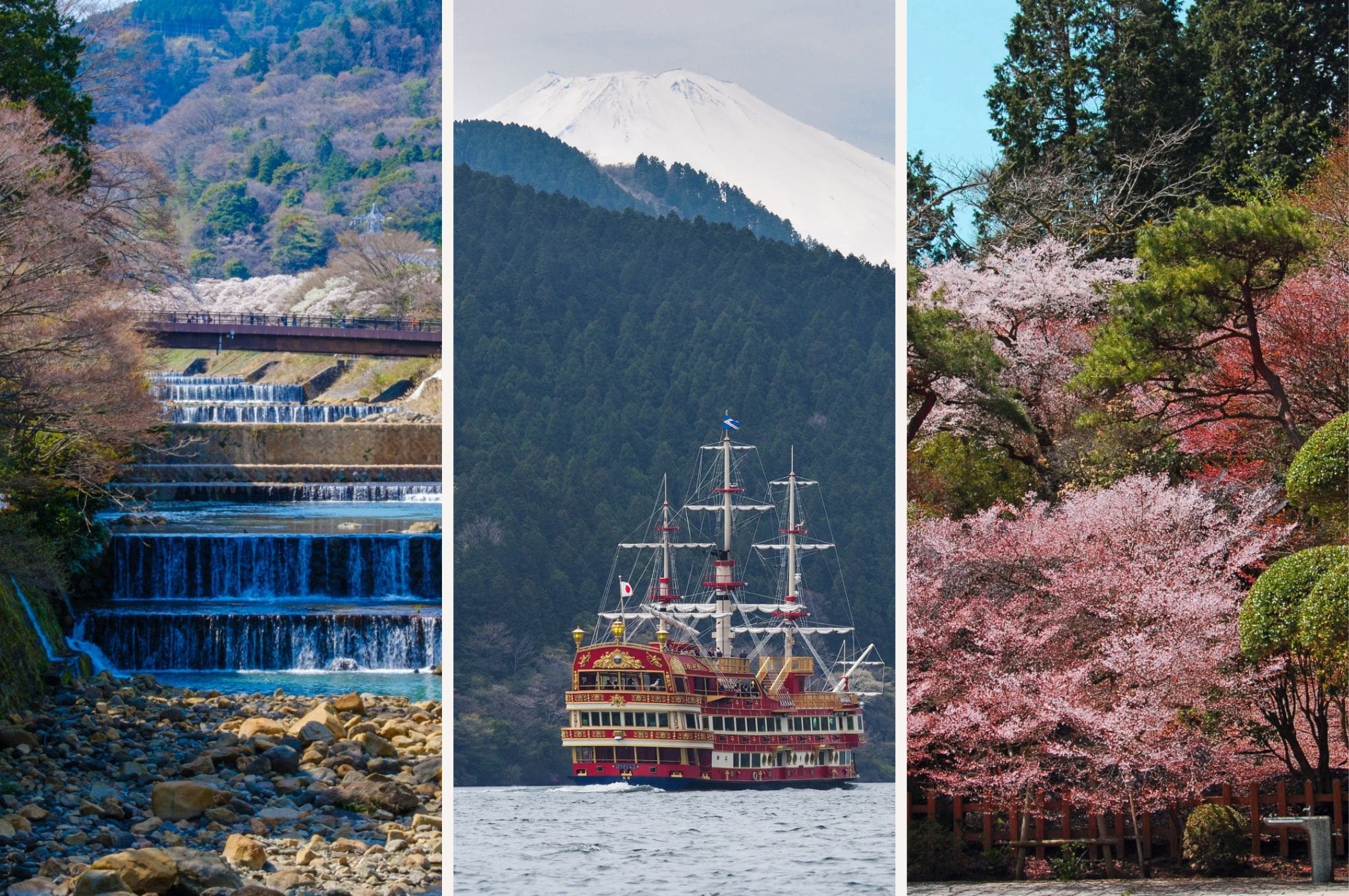
Take the Hakone Ropeway from Sounzan Station for panoramic views of the surrounding mountains and Lake Ashi (芦ノ湖). There’s a cafeteria in Togendai Station where you can stop for lunch.
Once there, it’s a good opportunity to get on the Pirate Ship to the other side of the lake in Motohakone Port. From there, go to Onshi-Hakone Park (箱根公園) for its stunning cherry blossoms and views of Lake Ashi. The park’s strategic location offers picturesque views of Mt. Fuji on clear days. If your accommodation in Hakone includes an Onsen, then it’s the perfect way to relax at the end of the day.
Days 5-6: Mt. Fuji Area
Day 5:
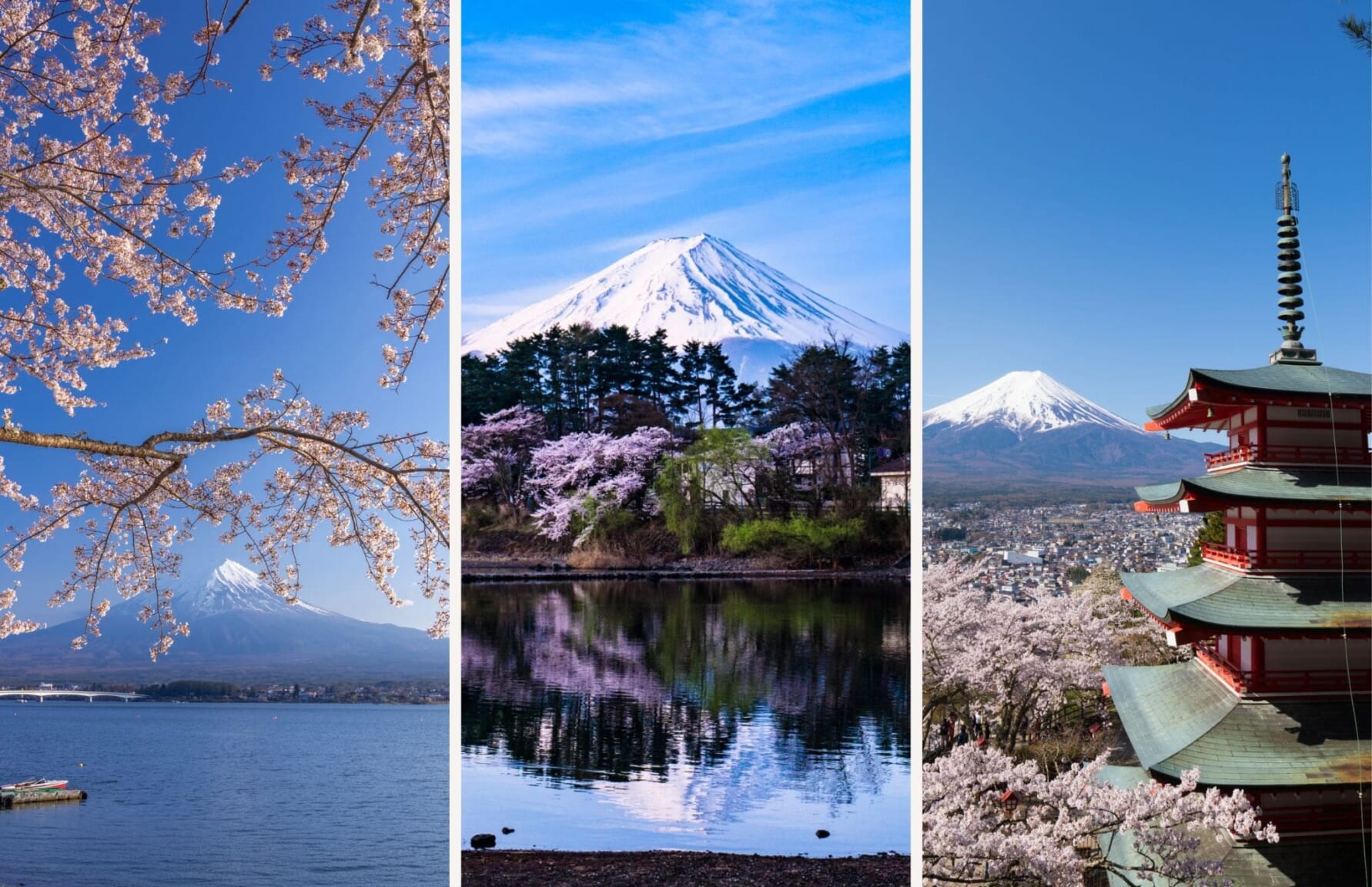
After lunch, head to the Arakura Fuji Sengen Shrine, where the famous Chureito Pagoda (忠霊塔) is located. On a clear day, you will be greeted with one of the most iconic sights of Mt. Fuji, towering above cherry trees and framed with the beautiful pagoda on the side. It’s also a wonderful spot to see the sunset.
Day 6:
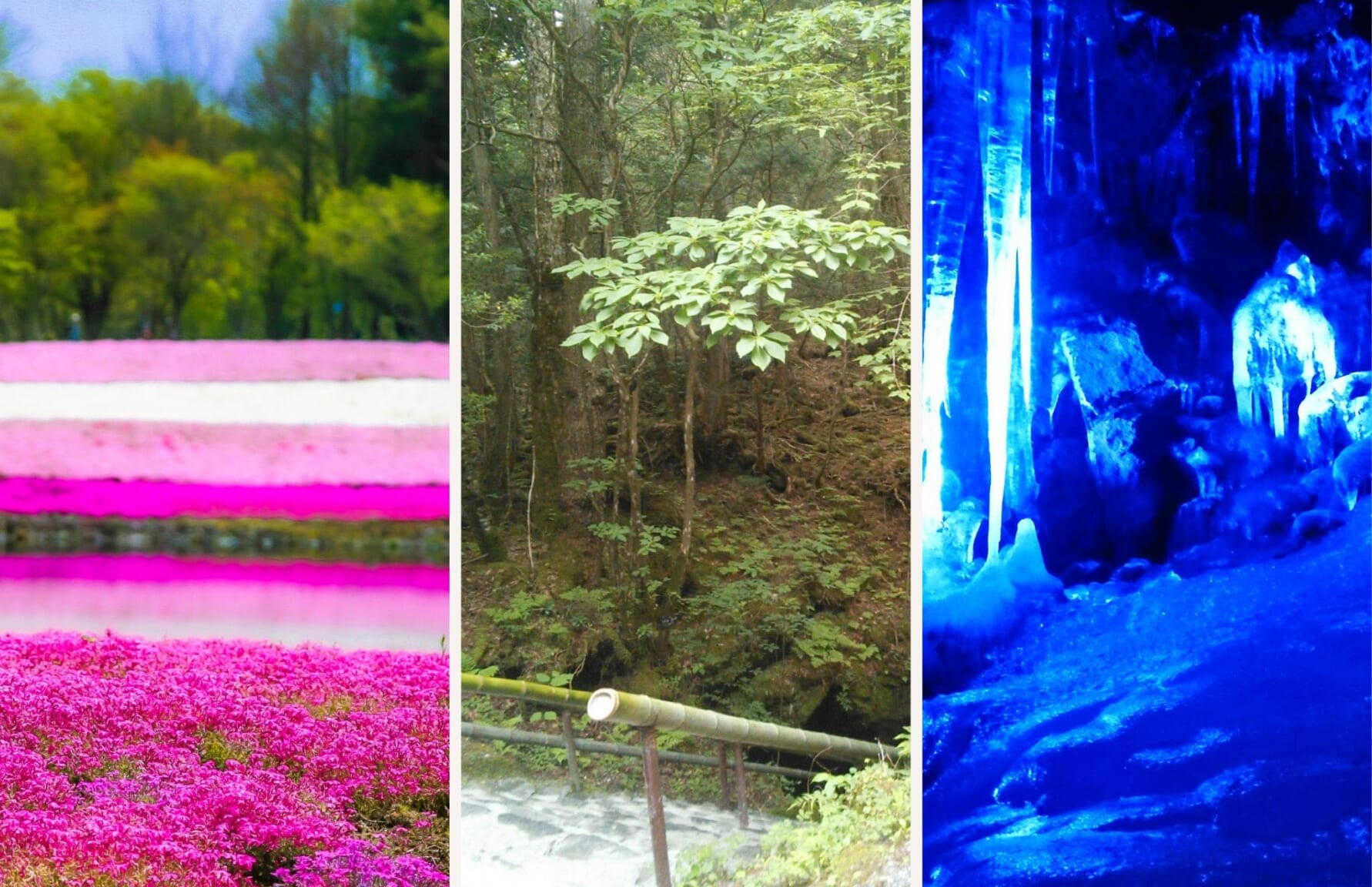
After lunch, visit the Fugaku Wind Cave (富岳風穴) and Narusawa Ice Cave (鳴沢氷穴), formed by lava flows from Mt. Fuji. It’s an interesting natural wonder that offers a glimpse into the volcanic activity that shaped the region. After you’re done, go to Shin-Fuji Station to ride the Shinkansen to Kyoto (about 2 hours and 30 minutes long).
Days 7-8: Kyoto
Day 7:
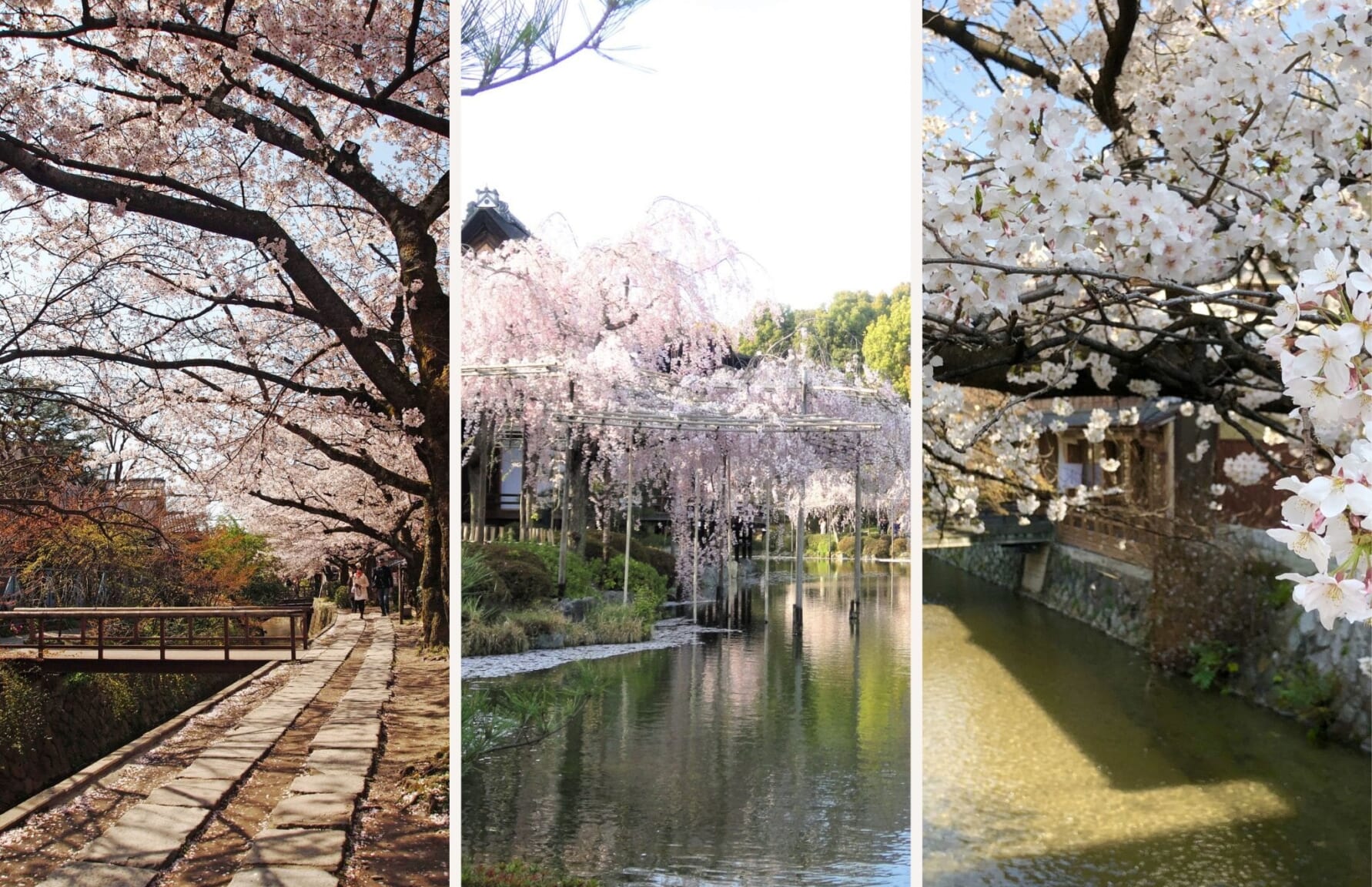
After lunchtime, visit Heian Shrine (平安神宮), known for its large torii gate and garden with weeping cherry trees. Then, explore Nanzenji (南禅寺), a Zen temple with a striking aqueduct and beautiful gardens. Then, spend the evening strolling through Gion (祇園), Kyoto’s geisha district. The area’s traditional wooden machiya houses and exclusive ochaya (teahouses) provide a glimpse into old Kyoto, where you can enjoy dinner in a traditional restaurant.
Day 8:
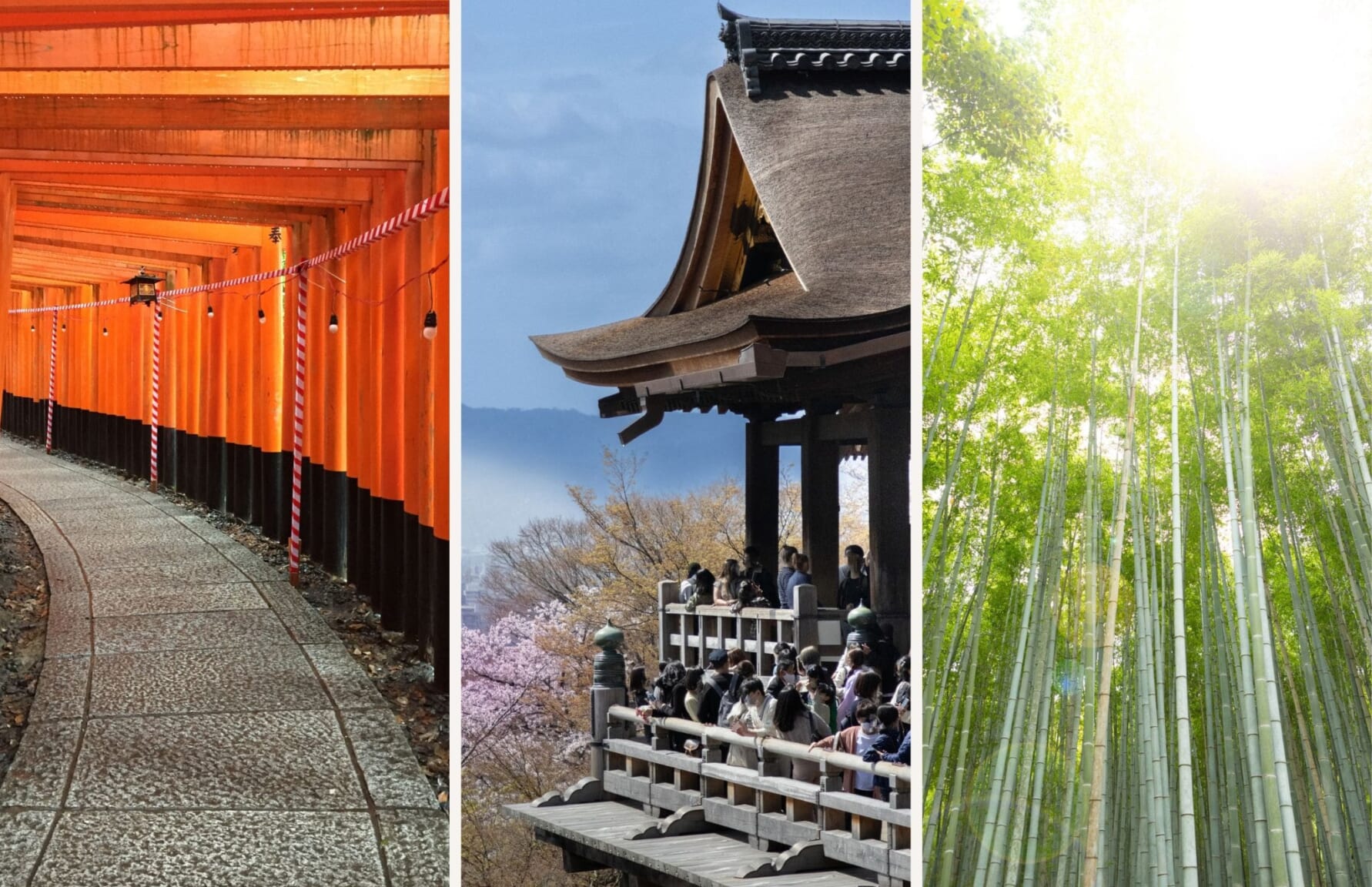
In the afternoon, head to Arashiyama (嵐山) to visit the famous Bamboo Grove and enjoy cherry blossoms around the area. The Togetsukyo Bridge offers picturesque views of the surrounding mountains and river. For the evening, return to Gion or explore Pontocho Alley, known for its fun vibe filled with bars and dining establishments. The restaurants with terraces facing the Kamo River are very popular in this area.
▽More ideas of things to do in Kyoto▽
▶Best Things to Do in Kyoto in Spring
▶Best Places to See Cherry Blossoms in Kyoto
▶Best Things to Do in Kyoto in March
▶Best Things to Do in Kyoto in April
Day 9: Day Trip to Nara
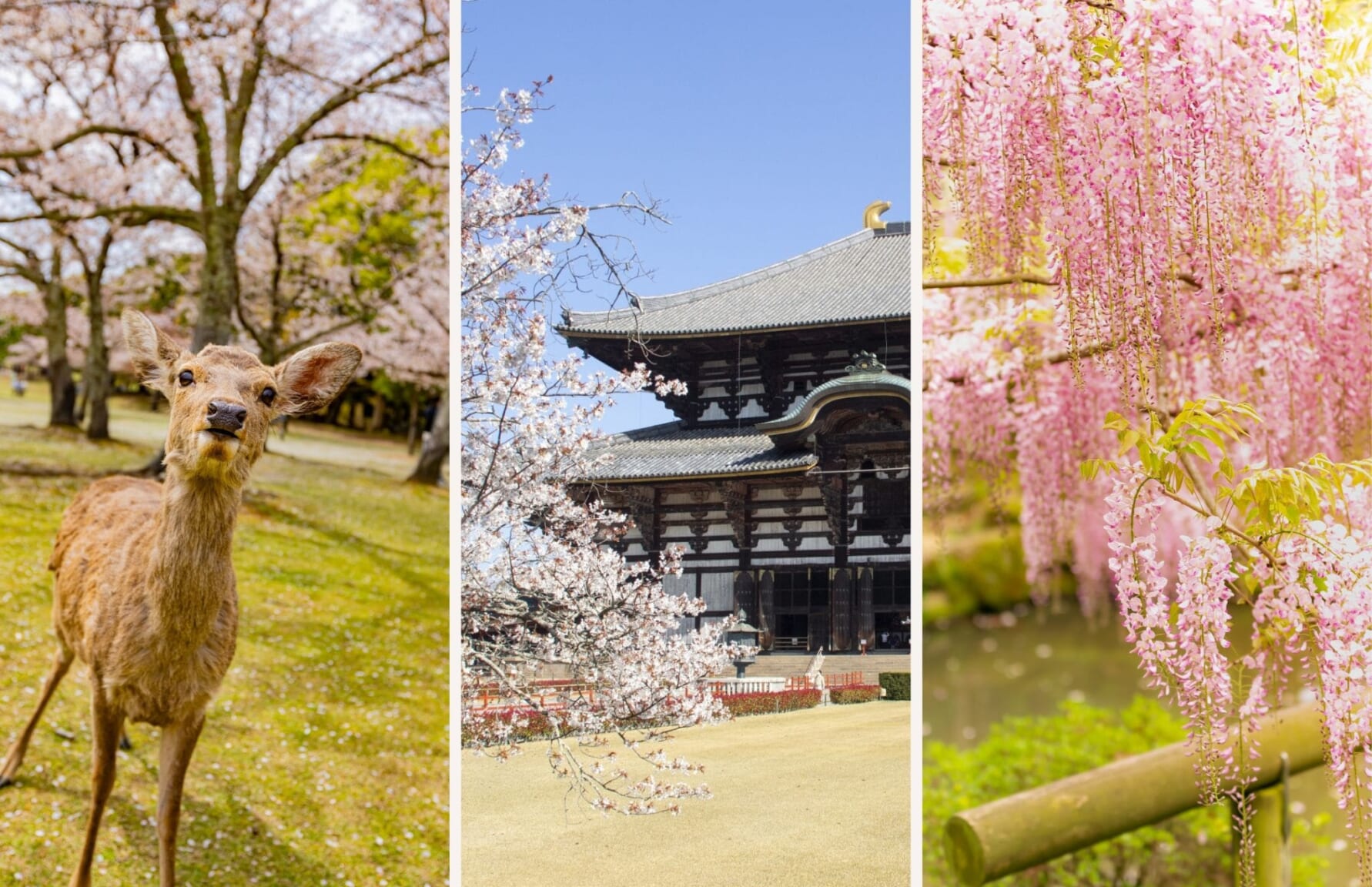
After lunch, visit Kasuga Taisha (春日大社), a Shrine known for its stone lanterns and wisteria flowers. Then, explore the Nara National Museum for a deeper understanding of Japanese Buddhist art.
▽More ideas of things to do in Nara▽
▶1 Day Itinerary in Nara: Day Trip to Nara from Kyoto
▶Best Temples and Shrines in Nara
Days 10-11: Osaka
Day 10:
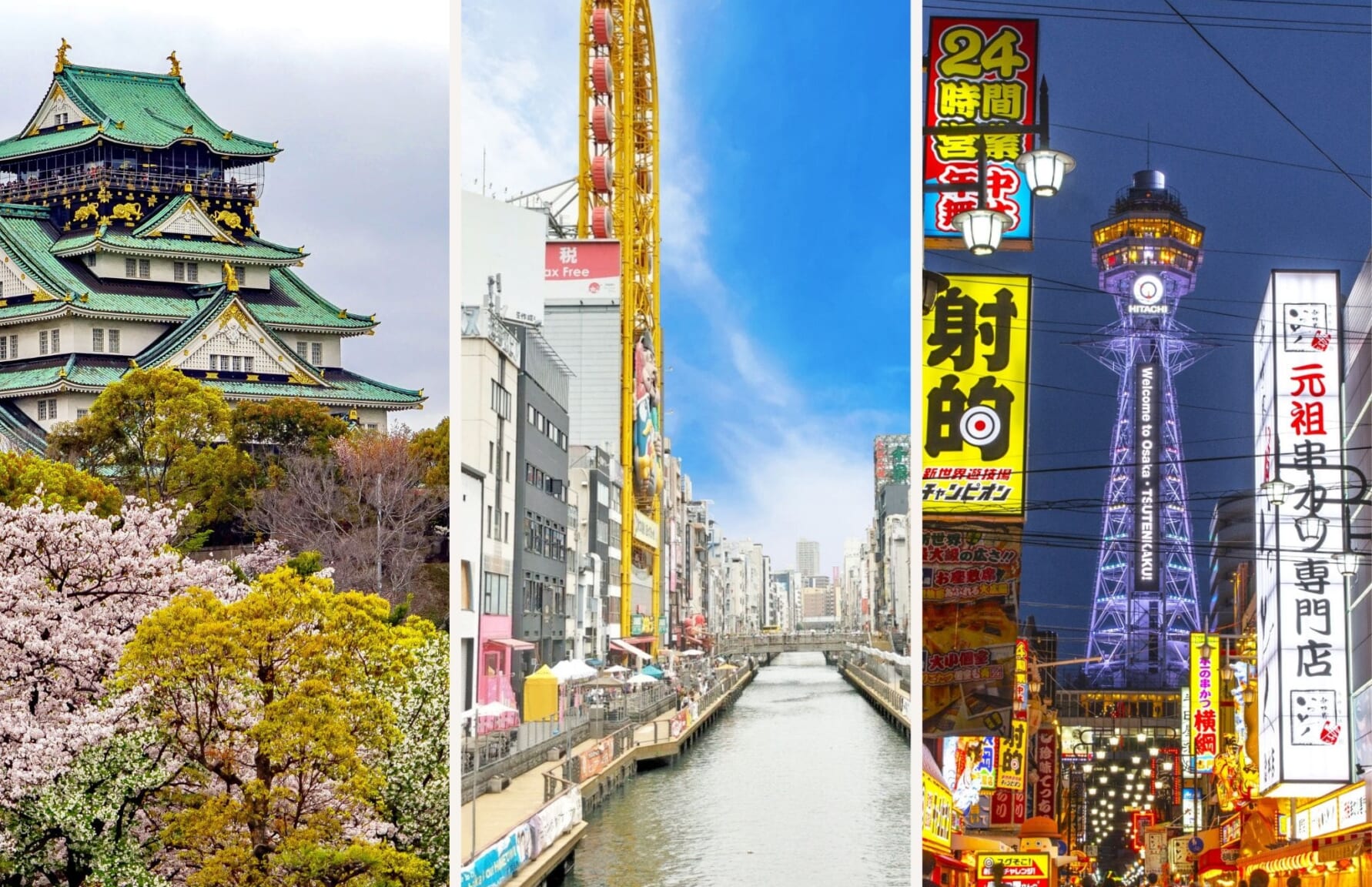
After the castle, head to Dotonbori (道頓堀), a popular entertainment district known for its extravagant signage, abundant dining options, and bustling atmosphere. Have lunch in one of its many eateries and spend the afternoon leisurely exploring the area, including the nearby Namba (難波) area. As evening falls, make sure to return to the Dotonbori River area to see the neon lights and then head straight to Shinsekai (新世界) for some more night photogenic sights. Don’t skip the local specialties such as takoyaki and okonomiyaki!
Day 11:
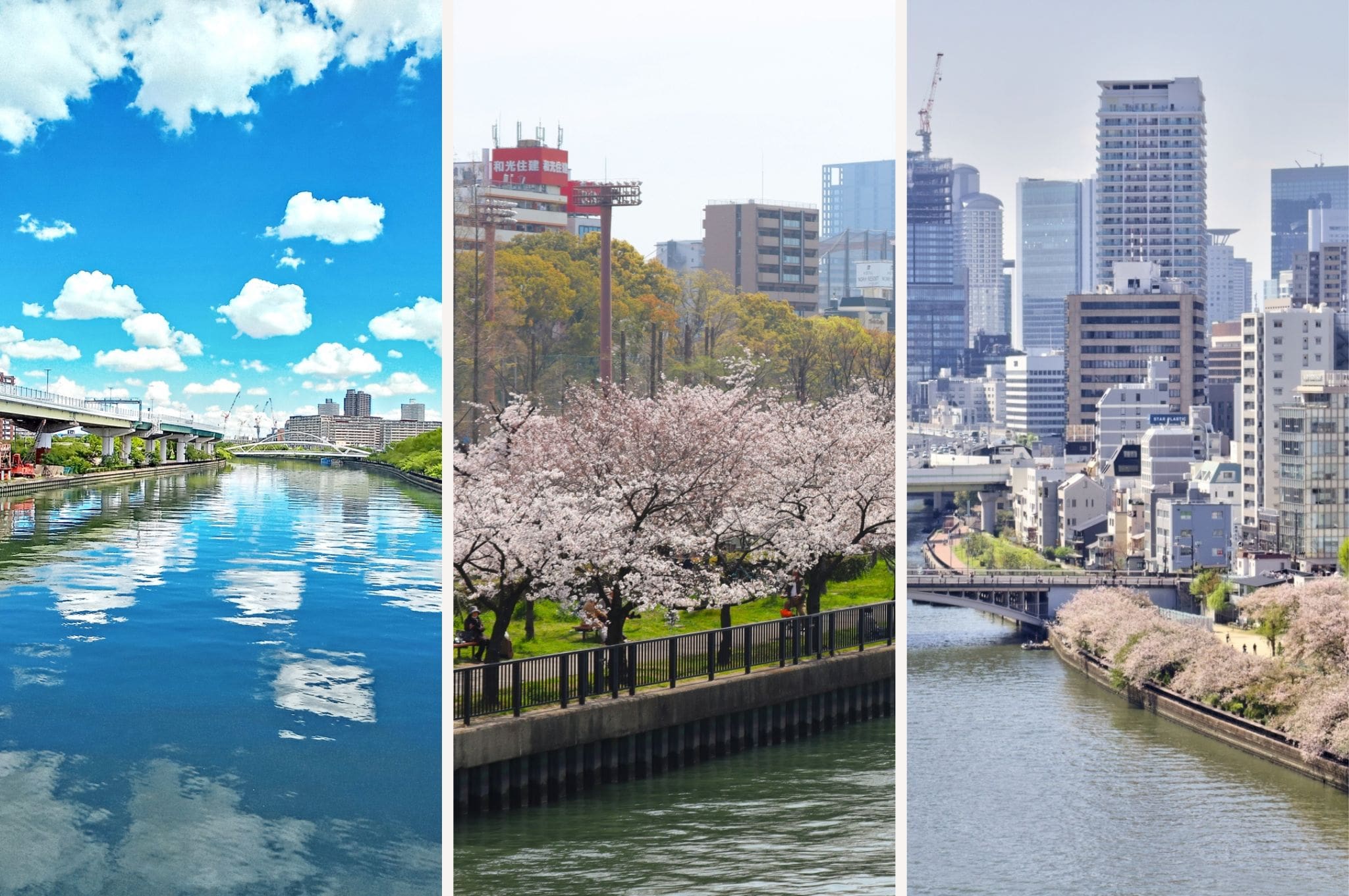
Then, spend the afternoon exploring the Umeda area, home to the Umeda Sky Building. Its floating garden observatory offers stunning city views, making it a perfect spot to reflect on your time in Osaka.
▽More ideas of things to do in Osaka▽
▶Best Things to Do in Osaka in Spring
▶Best Places to Visit in Osaka
Day 12: Hiroshima & Miyajima
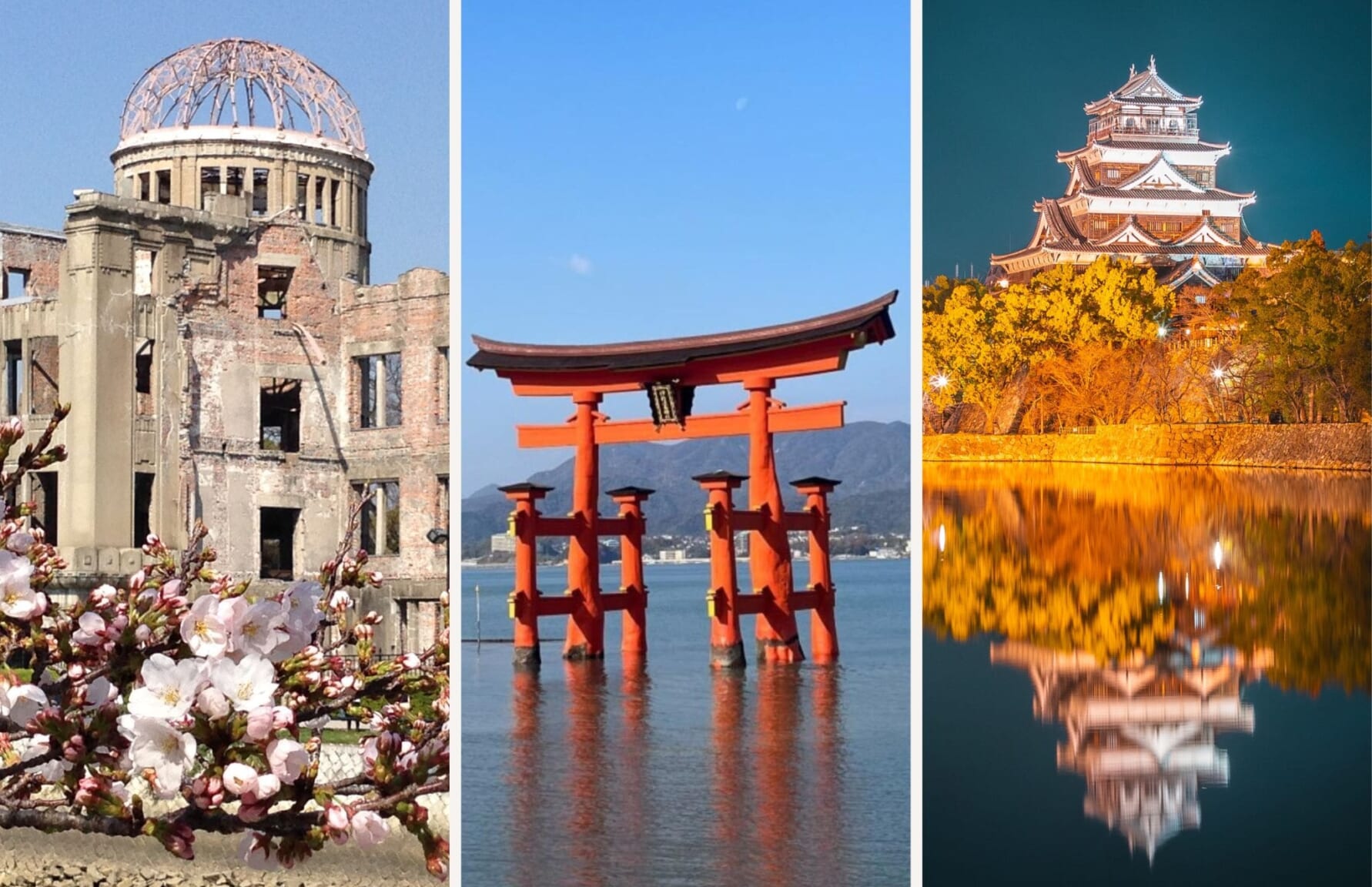
For lunch, take the ferry to Miyajima, famous for Itsukushima Shrine (厳島神社) and its floating torii gate. Explore the traditional shops and restaurants to try local specialties and take the ropeway to enjoy the coastal views framed by cherry blossoms. Then, return to Hiroshima for the evening. Take a stroll around Hiroshima Castle (広島城) to see the pretty night views and then go for dinner. You should probably try Hiroshima-style okonomiyaki!
Days 13-14: Return to Tokyo
Day 13:
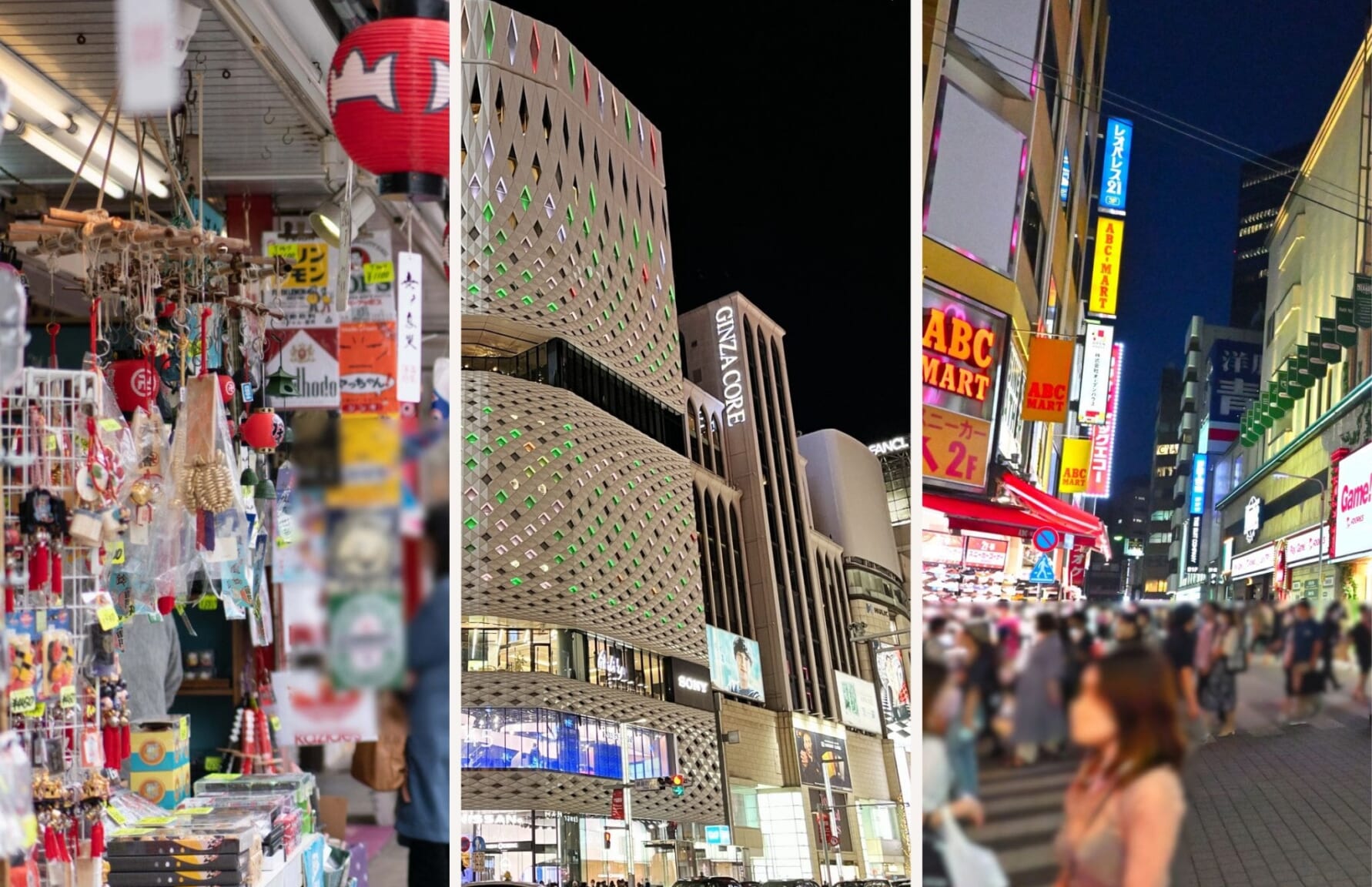
For example, you could spend the afternoon-evening around Ginza (銀座), an area filled with department stores and restaurants. Or perhaps stop by Ikebukuro (池袋) for those more inclined to manga/anime goods.
▽Shopping ideas in Tokyo!▽
▶Most Popular Clothing Stores in Tokyo
▶Best Department Stores in Tokyo
Day 14:
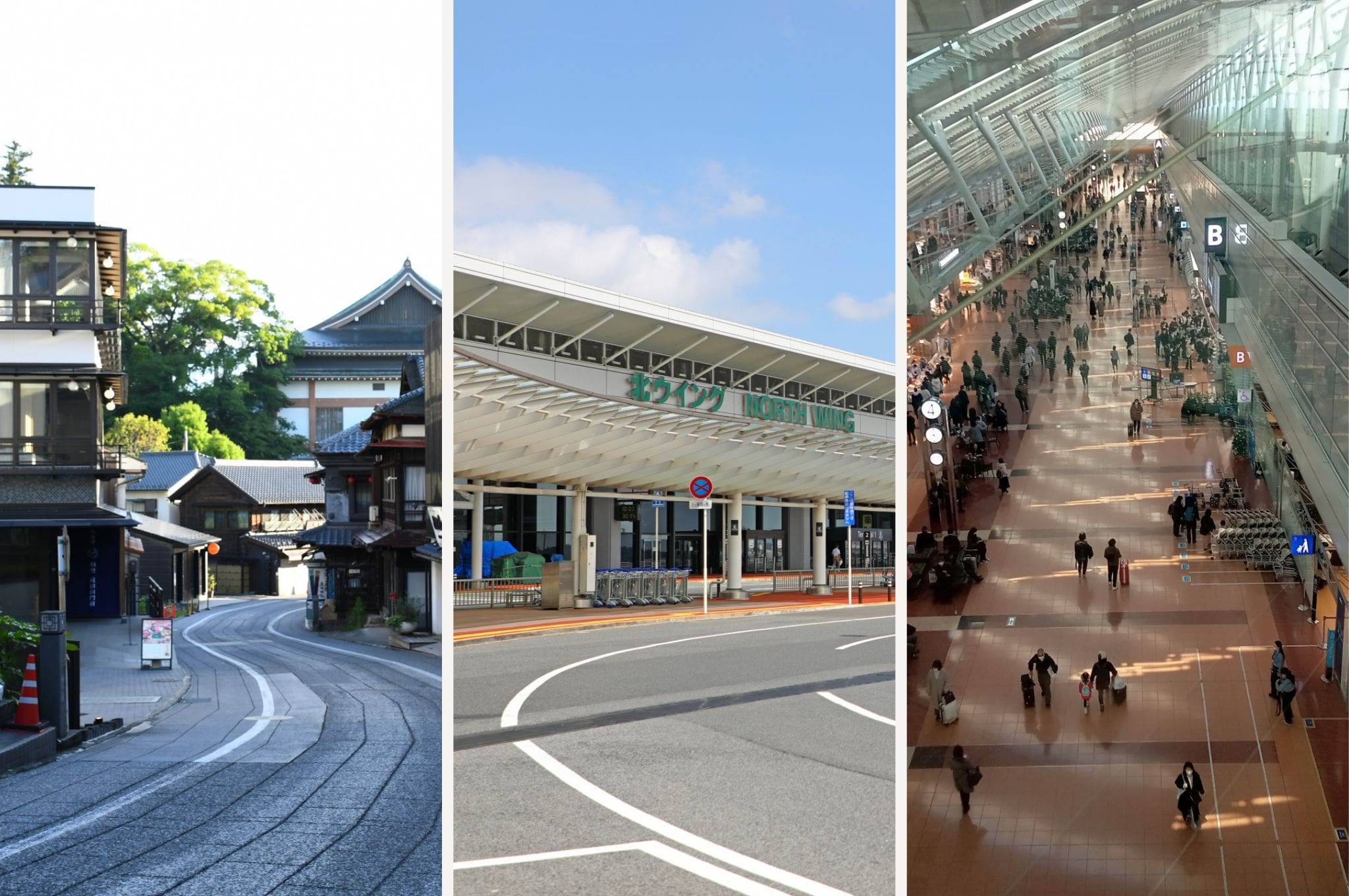
Same for Haneda Airport. Haneda Airport Garden is a facility recently opened that provides a lot of convenience for leisure and shopping so it’s also a great option to get souvenirs, have another taste of that regional dish you liked so much, or simply relax on your last day before departing.
▽Souvenir ideas!▽
▶Things to buy in Narita Airport or Haneda Airport
▶JAPANESE Souvenir “OMIYAGE” List
I made this 14-day Spring itinerary thinking of making the best of Japan’s Spring season! No need to follow it to the letter but it should give you a good idea of the things you should not miss, particularly during Sakura season to get the experience of a lifetime!
Travelling Japan in spring with a shorter period of time? Here is our 7-day spring itinerary around Tokyo!
For more information about activities and itineraries in Japan, check these articles below, too!
Written by
Photographer, journalist, and avid urban cyclist, making sense of Japan since 2017. I was born in Caracas and lived for 14 years in Barcelona before moving to Tokyo. Currently working towards my goal of visiting every prefecture in Japan, I hope to share with readers the everlasting joy of discovery and the neverending urge to keep exploring.





